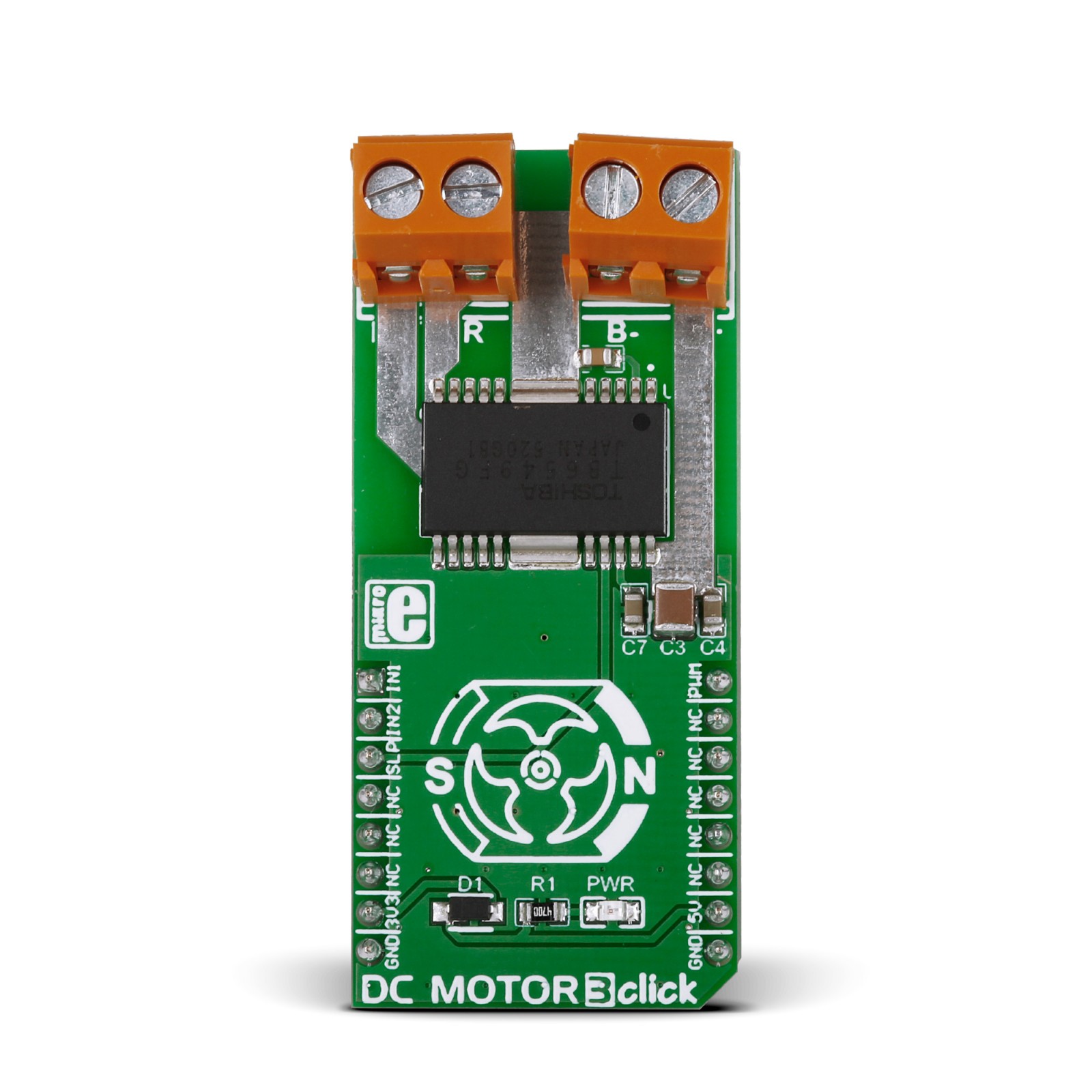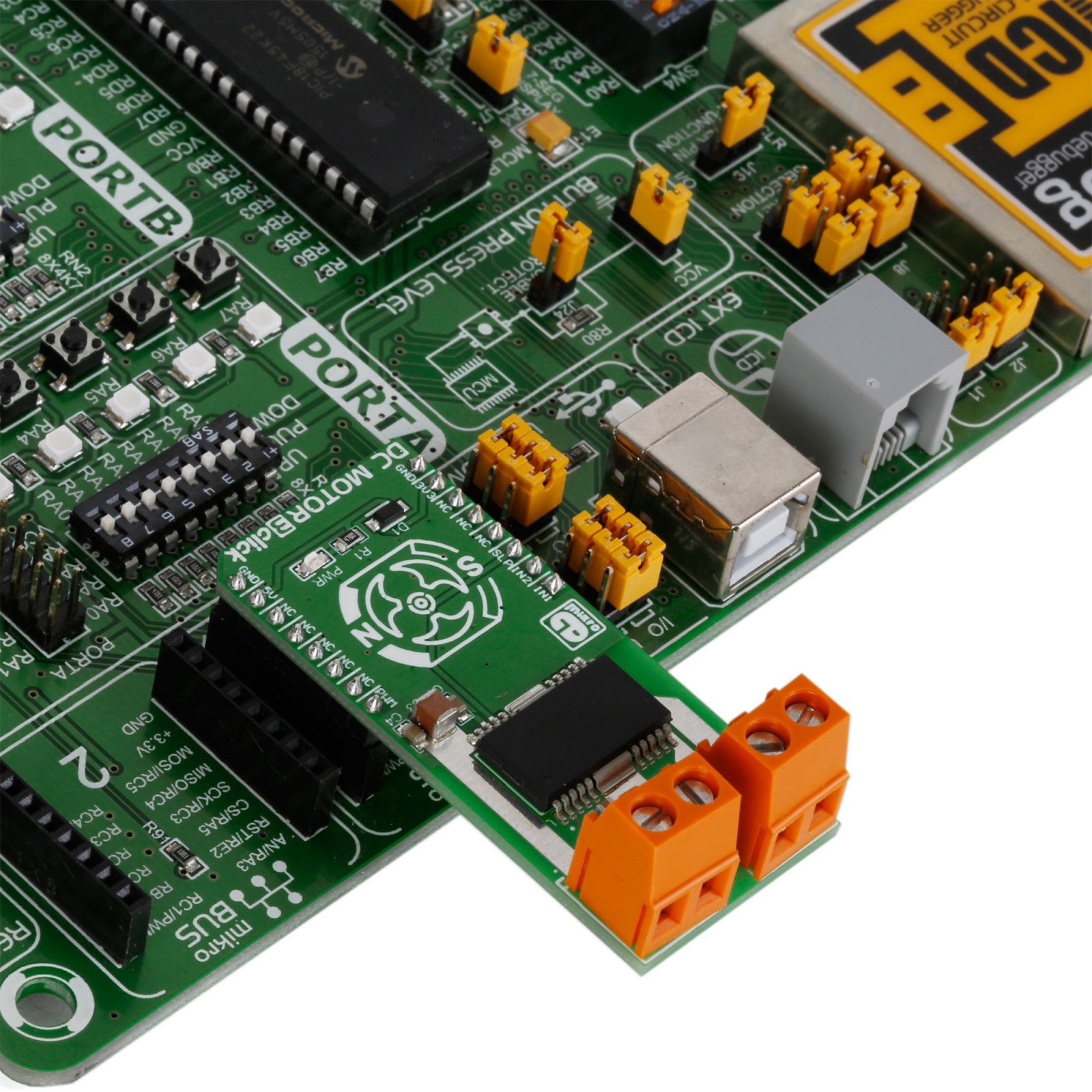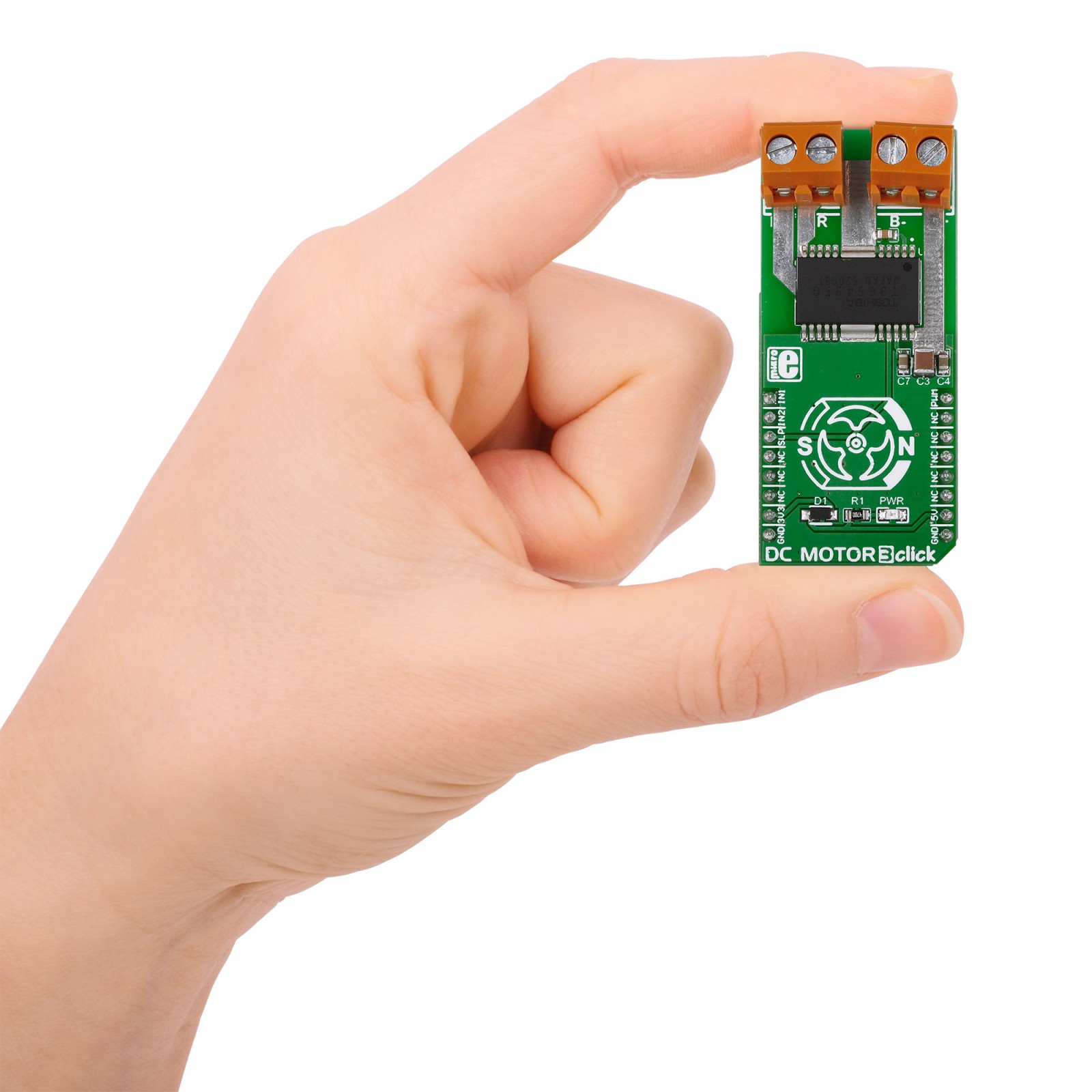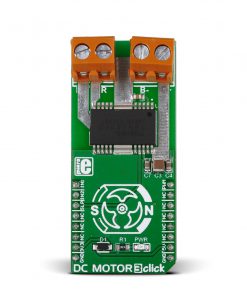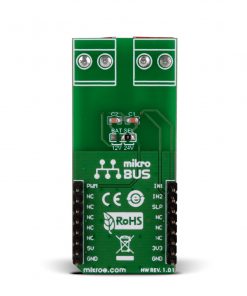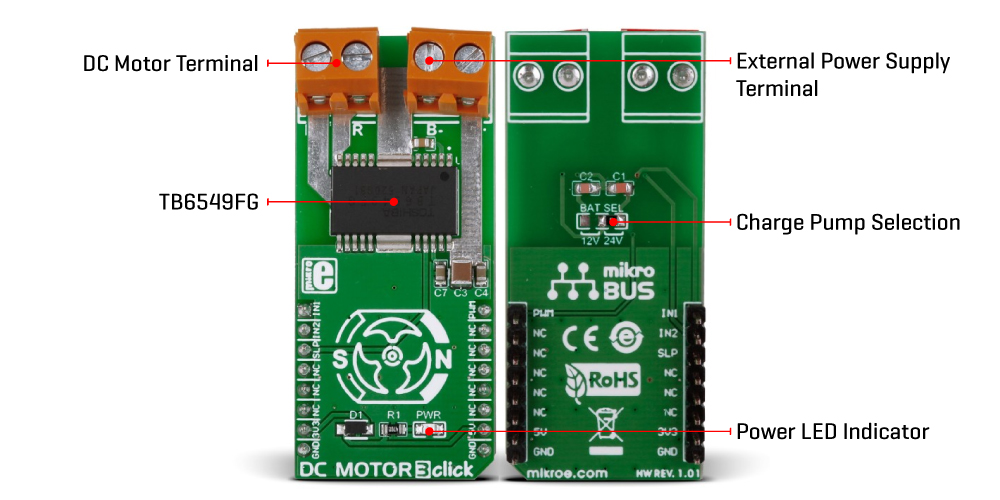DC Motor 3 Click
R425.00 ex. VAT
DC MOTOR 3 Click is a compact add-on board that controls DC motors with brushes. This board features the TB6549FG, a full-bridge driver IC for direct current motors from Toshiba Semiconductor. It can provide the DC motors with a significant amount of current of up to 2A, and a voltage from 10V up to 27V. The TB6549FG uses an LDMOS structure for output transistors, which high-efficiency drive possible through the use of a MOS process with low ON-resistance and a PWM drive system. This Click board™ makes the perfect solution for the rapid development of various DC motor driving applications, including home appliances, printers, industrial equipment, mechatronic applications, and more.
DC MOTOR 3 Click is supported by a mikroSDK compliant library, which includes functions that simplify software development. This Click board™ comes as a fully tested product, ready to be used on a system equipped with the mikroBUS™ socket.
Stock: Lead-time applicable.
| 5+ | R403.75 |
| 10+ | R382.50 |
| 15+ | R361.25 |
| 20+ | R347.65 |

